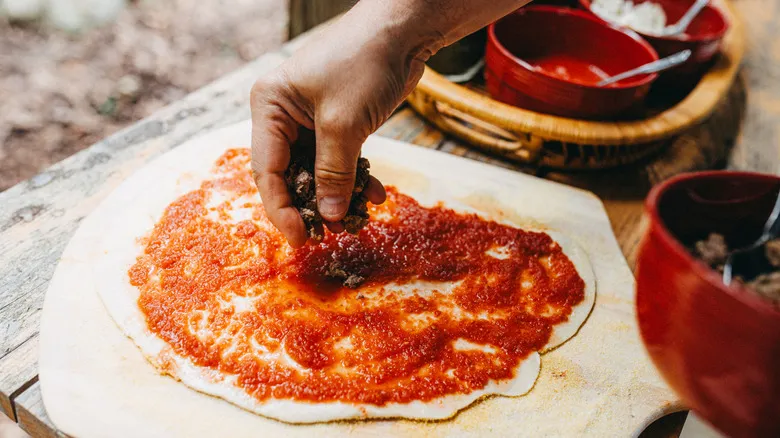Sometimes, whether or not you pre-cook pizza toppings is also a matter of taste
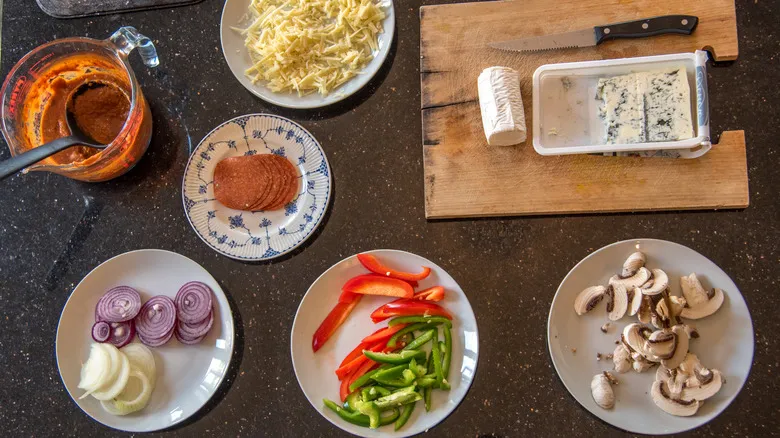
There are additional toppings that you might want to cook beforehand, although skipping this step isn't a food safety concern. Several vegetables fall into this category, including mushrooms, zucchini, peppers, broccoli rabe, and root vegetables such as sweet potatoes or regular potatoes. Many vegetables contain a lot of water, so if you add them to your pizza raw, they can release moisture during baking, potentially making the pizza soggy, especially if your oven isn't sufficiently hot. This is a common mistake that can result in a wet crust. By roasting or sautéing these vegetables first, you can reduce their water content and prevent your pizza from becoming soupy.
There’s also a flavor aspect to consider—certain vegetables like potatoes or broccoli may not cook thoroughly if added raw to the pizza, and they can be unappetizing when undercooked. With peppers and mushrooms, this is less of an issue, but cooking them (and seasoning them in the process) can enhance their flavor. For onions, it often comes down to personal preference—many recipes suggest caramelizing them for pizza, while some people might prefer the sharper taste of raw onions. However, not all vegetables require cooking; leafy greens like arugula or spinach can be added directly on top.
Recommended
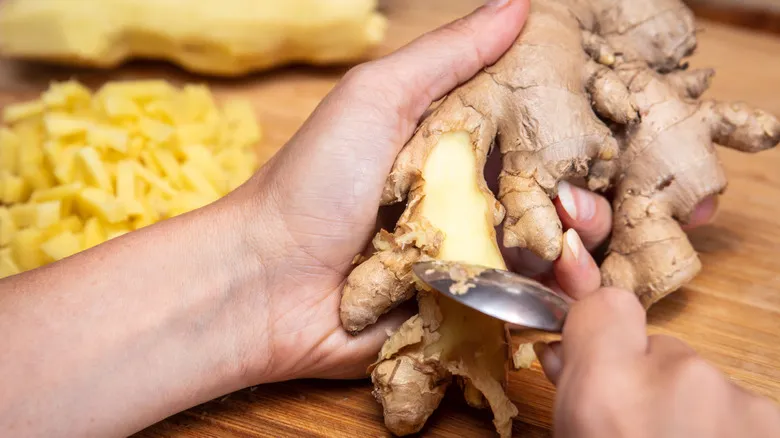
The Simple Hack That Makes Peeling Ginger Easier
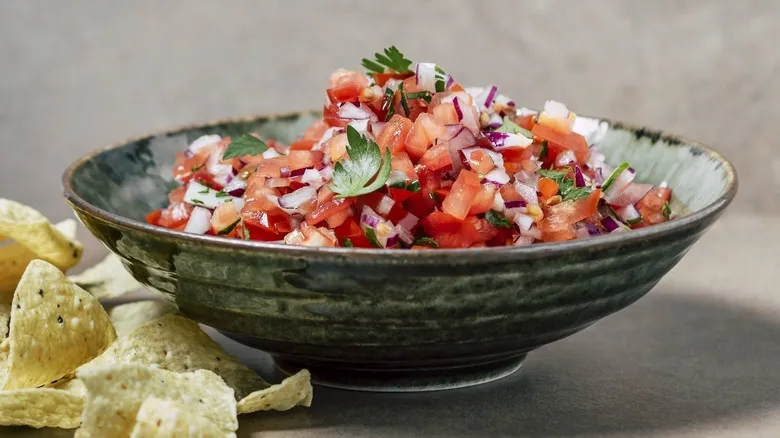
Here's How Long Your Fresh Homemade Salsa Will Last In The Fridge

Add One Pantry Staple To Meatballs For A Flavor-Packed Upgrade
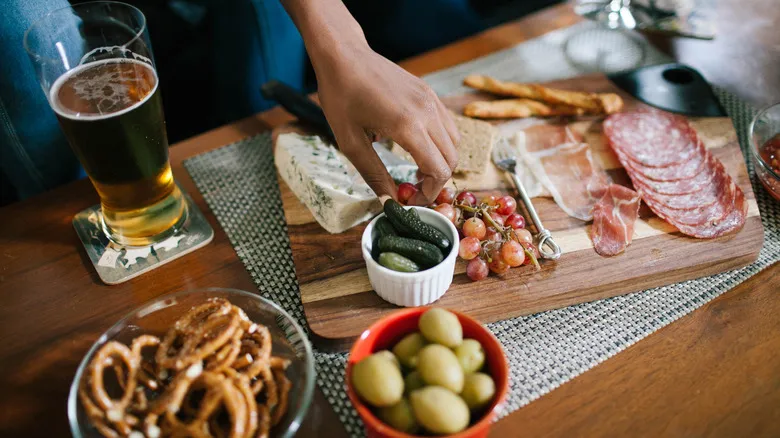
4 Expert-Approved Tips For Building Better Charcuterie Boards
Next up

